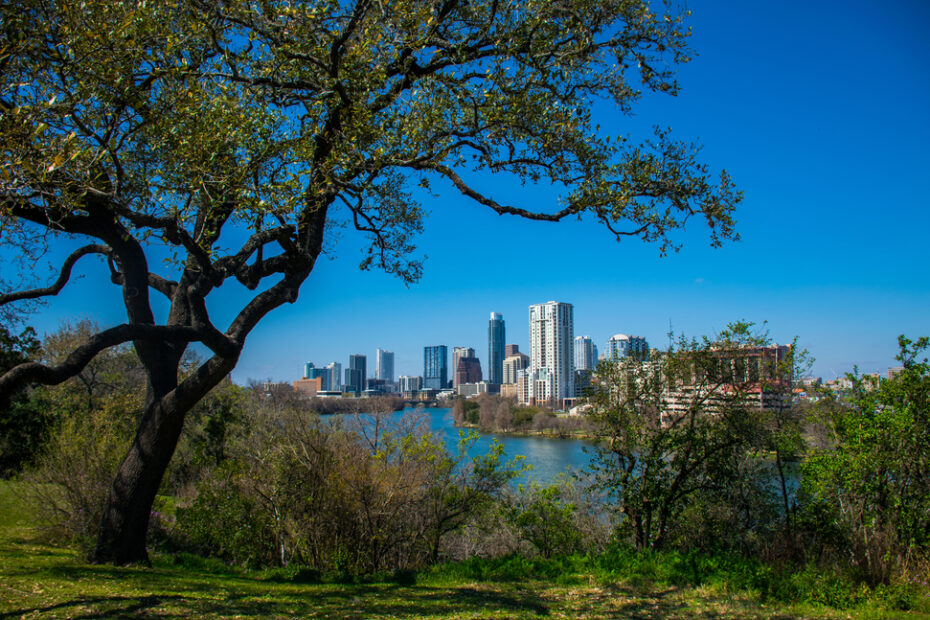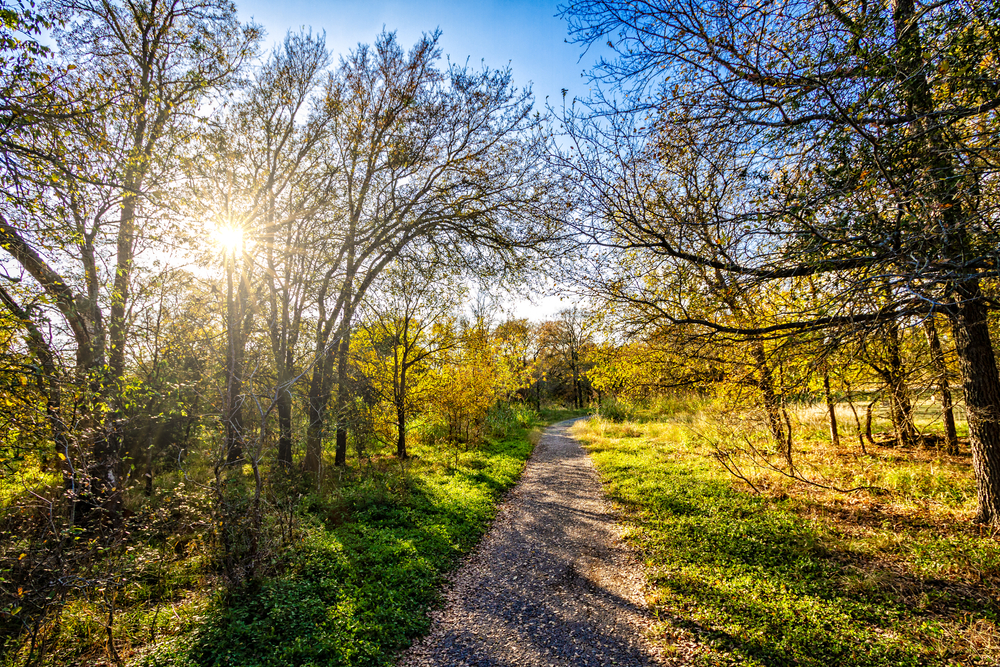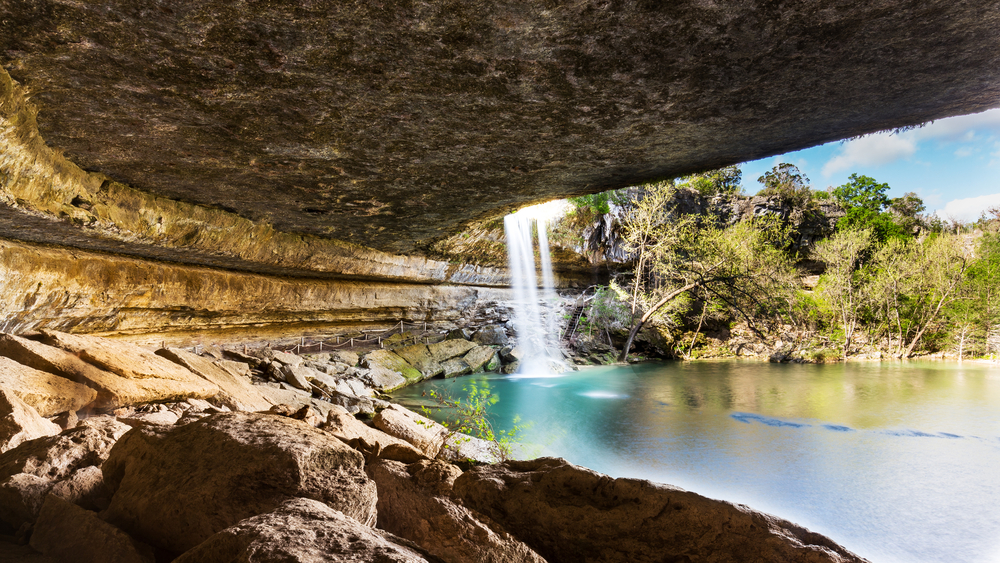Beautiful parks are some of the main attractions in Austin…
The best parks in Austin are among the best in the country.
We covered amusement parks in Austin and central Texas in another article…
We’ll leave the best food truck parks in Austin for another day…
Today we’ll cover the places where Austinites spend their afternoons and weekends, the public space that’s the glue of this beautiful city.
The parks in Austin, TX are one of the keys to what makes the city special. They’re a meeting place that allows all different types to come together, yet do their own thing.
The best dog parks in Austin pull in the busy professionals whose only daytime break is their dog walk, as well as the pet lovers — which includes basically everyone else.
Weekend glampers and nomadic retirees are drawn to the ample RV camping parks in Austin, TX. There they share a night sky with outdoor types, families, youth groups and team-building tech workers.
Skate parks in Austin pull in adventurous teens and varial veterans. Water parks in some Austin and central Texas parks give younger kids pulse-pounding possibilities.
The public parks in Austin and central Texas are special together because they are so unique on their own.
Read on for our list of the best parks in Austin, TX — and discover which ones match your style.
Best Parks Around Austin
- Zilker Park
- McKinney Falls State Park
- Mayfield Park
- Pease Park
- Mueller Lake Park
- Emma Long Metro Park
- Mount Bonnell
- Barton Creek Wilderness Park
- Bull Creek District Park
- Wild Basin Wilderness Preserve
- Hamilton Pool
- Butler Metro Park
- Onion Creek Metro Park
- Red Bud Isle
- Walnut Creek Metropolitan Park
- Shoal Creek Hike and Bike Trail
- Brushy Creek Regional Trail
- Bastrop State Park
Zilker Park
- Fees: Admission free, attractions vary
- Hours of operation: Open daily, 5 a.m. – 10 p.m.
- Neighborhood: South Austin
- Official website: http://www.austintexas.gov/department/zilker-metropolitan-park
First off, let’s traipse over to ‘Austin’s most-loved park.’ This 350-acre gem in south Austin is where Austinites go to play.
It’s a good hop-on point for the Ann and Roy Butler Hike and Bike Trail, a 10-mile-long path that surrounds Lady Bird Lake. Several other destinations sit within its borders, like Barton Springs Pool, the Zilker Botanical Garden and the Austin Nature and Science Center.
That doesn’t even include one of the biggest destinations for two weekends in October — the Austin City Limits Music Festival. About 450,000 people attend each year.
McKinney Falls State Park
- Fees: Daily entry fee of $6 for those 13 and older / Campsite prices range from $20–24 per night, cabins are $86 a night
- Hours of operation: Open daily, 8 a.m. – 10 p.m.
- Neighborhood: McKinney
- Official website: https://tpwd.texas.gov/state-parks/mckinney-falls
Waterfalls, white-tailed deer and 500-year-old trees — it’s easy to forget that McKinney Falls is still in Austin. Yet 641 acres of hikeable, bikeable, campable and incomparable Texas wilderness sits just 13 miles from the state capitol, on the old Thomas McKinney ranch and horse breeding homestead.
The Onion Creek flows for nearly three miles within the park, over two sets of falls and many limestone ledges. Newly remodeled cabins dot the creekbanks, and swimming is allowed by both sets of falls.
The park often reaches capacity for both camping and day use; reservations are recommended.
Mayfield Park
- Fees: Free entry
- Hours of operation: Open daily, 5 a.m. – 10 p.m.
- Location: Sugar Land, TX
- Official website: https://mayfieldpark.org
Mayfield Park is famous for its peafowl — both ornately-feathered peacocks and more subdued peahen. But look a bit deeper and you’ll find much more.
The 21-acre nature preserve is filled with the careful touches of the couple who spent almost 50 years building out their peaceful vision, in a long-time collaboration with their live-in gardener. There are six ponds arranged in the shape of a flower, stone walls that run throughout the property, walking trails and wildlife.
The three-porched cottage is a popular site for weddings and other events — Mayfield is sometimes called ‘the poor man’s Laguna Gloria’, after its better-known and more expensive next-door neighbor.
Pease Park
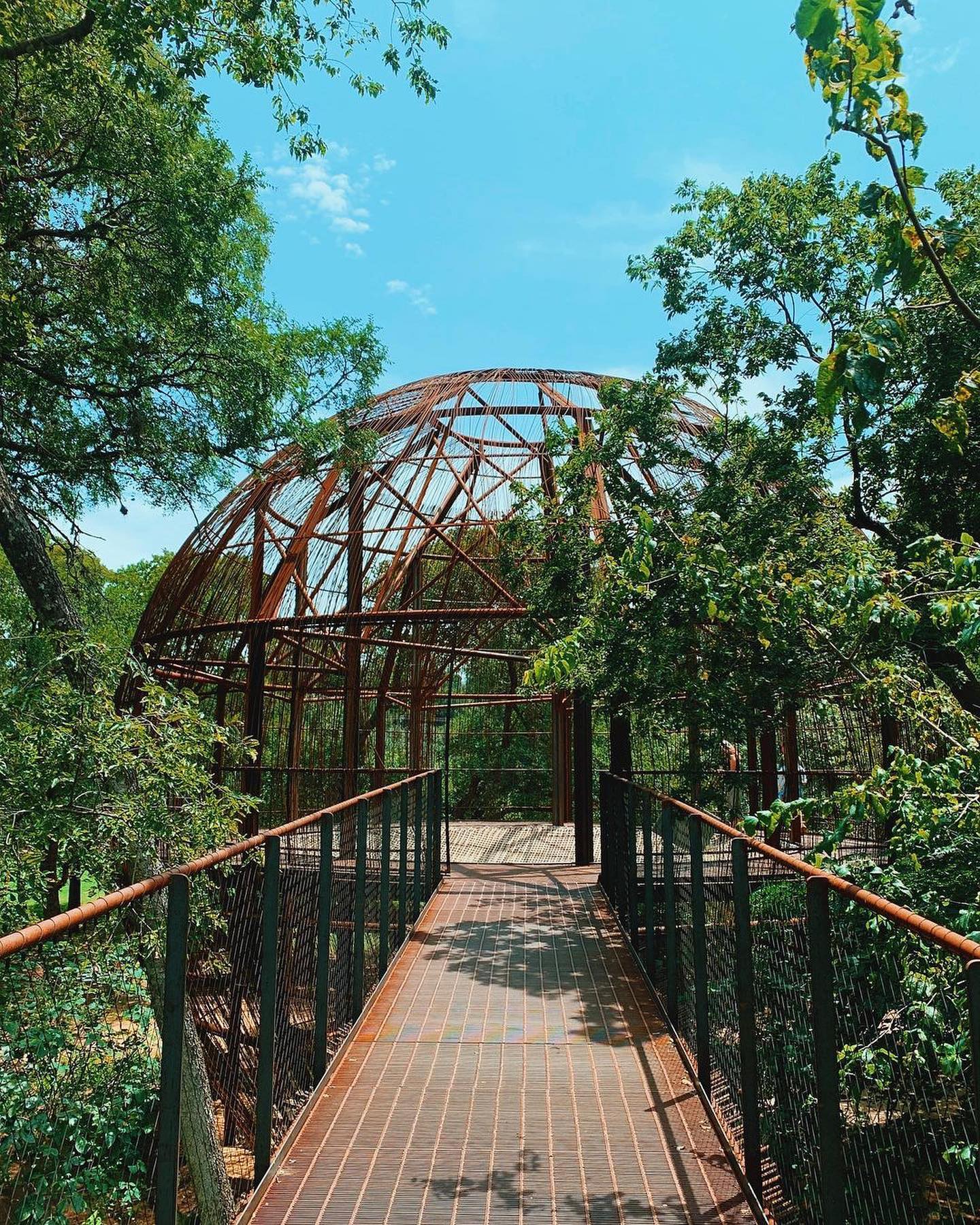
Image credit: austin.bucketlist
- Fees: Free entry
- Hours of operation: Open daily, 7 a.m. – 10 p.m.
- Neighborhood: Downtown
- Official website: https://austinparks.org/pease-district-park/
Pease Park is Austin’s first public park. Much of its 84 inner-city acres follow Shoal Creek, accounting for a large stretch of the Shoal Creek Greenbelt.
In 1926, this land gift of former Texas Governor Elisha Pease and his wife Lucadia was given stone entrance gates and restrooms by the city. Over the years, it was outfitted with the trails and facilities that have made it such a popular gathering place. Just this year, the seven-acre swath near the entrance was reimagined to include several play areas and a ‘treehouse observation pod.’
Pease Park is also home to the annual hippie festival Eeyore’s Birthday Party. Named after the depressed donkey of Winnie-the-Pooh fame, the event features live music, costume contests and large drum circles.
Mueller Lake Park
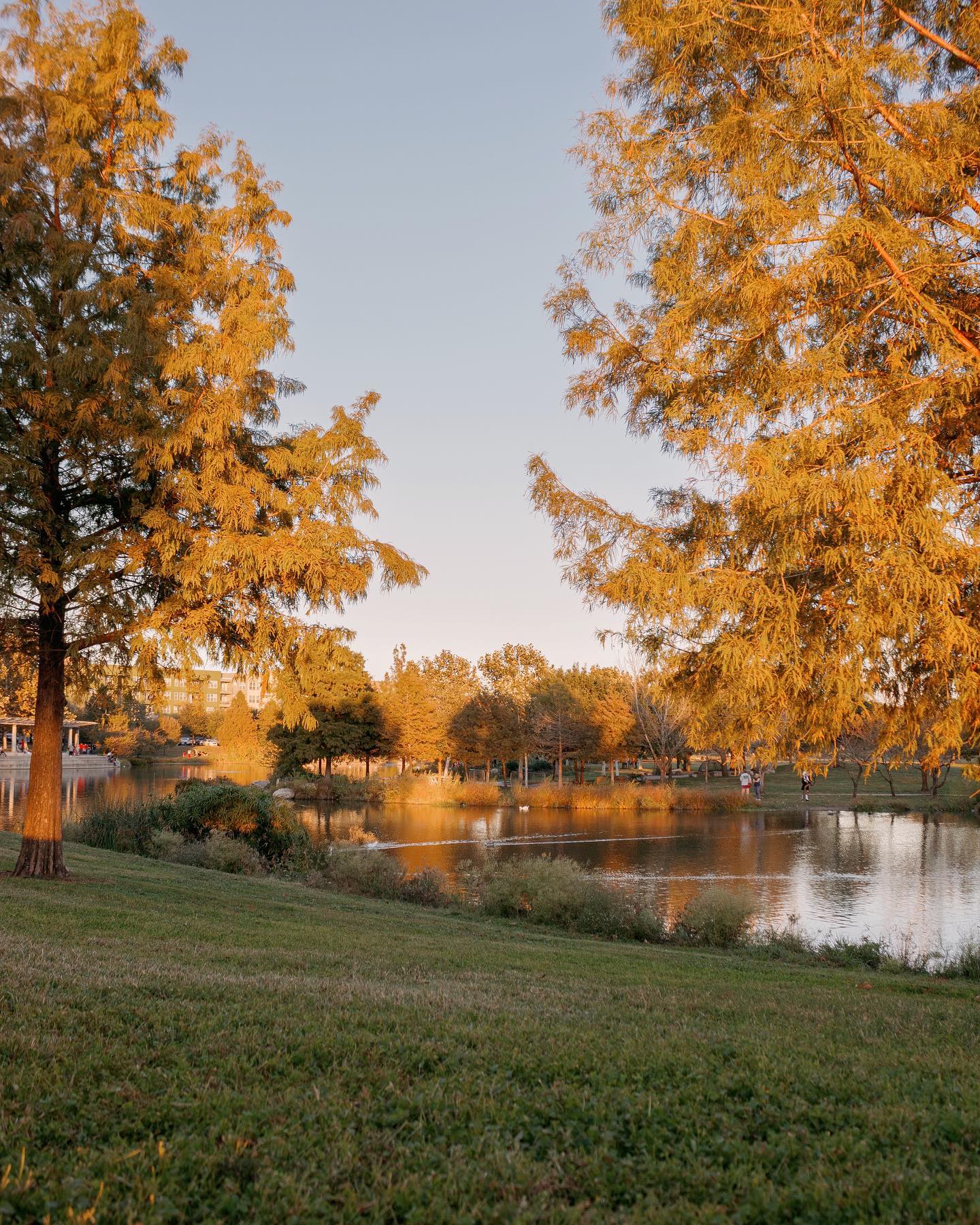
Image credit: mgalvaog
- Fees: Free entry
- Hours of operation: Open daily, 5 a.m. – 11 p.m.
- Neighborhood: Mueller
- Official website: https://www.muelleraustin.com/thinking-green/parks
Mueller Lake Park is 30 acres in all — the lake accounts for 6.5 acres. Besides the lake, the park features an open-air amphitheater, play areas and a half-paved, half-gravel 2.6-mile loop trail. The trail passes several shops and restaurants, giving the park a mixed-use feel.
The picnic peninsula is a popular take-out spot for the food served at Mueller Trailer Eats, the food truck park nearby. Options and hours vary — check the Facebook page for the current list.
In addition, the park has ‘only-in-Austin’ touches like the 30-foot-long Nessy the Lakeness Dragon sculpture, made of shiny mosaic tiles. Less popular is Dixie, a terrifying 23-feet tall iron spider sculpture.
Emma Long Metro Park
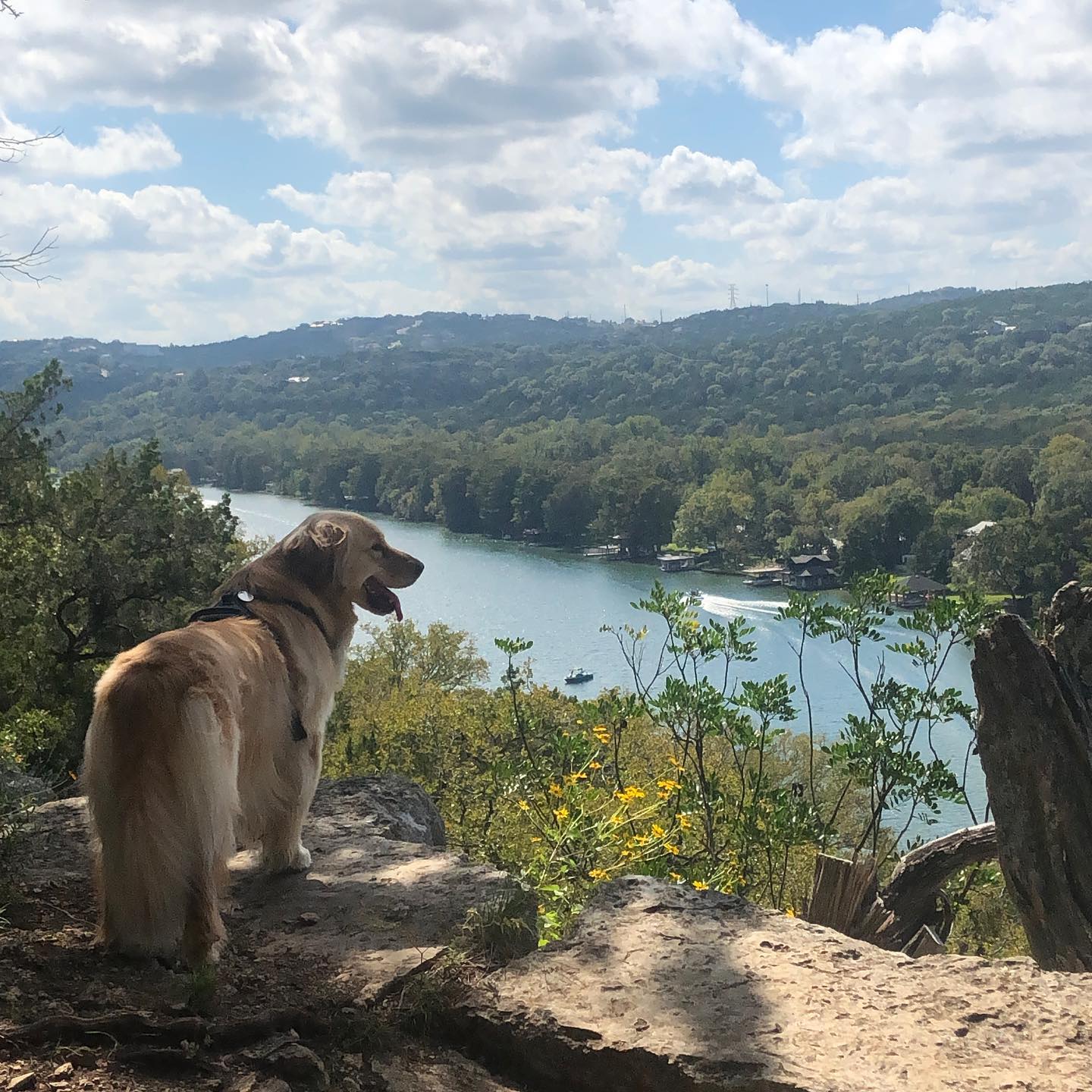
Image credit: dailyzoomiesatx
- Fees: Daily entry fee from $1–10 / Campsite prices range from $10–25
- Hours of operation: Open daily, 7 a.m. – 10 p.m.
- Neighborhood: Northwest Austin
- Official website: https://www.austintexas.gov/department/emma-long-metropolitan-park
Emma Long Park is 1,142 acres of urban forest bordering Lake Austin.
Water access is a big feature, and the park features boat ramps, a beach and lakeside camping.
Mount Bonnell
- Fees: Free entry
- Hours of operation: Open daily, 5 a.m. – 10 p.m.
- Neighborhood: Old Austin
- Official website: https://mountbonnell.com
This 102-stair climb is where Austinites and tourists (well, mainly tourists) go to see one of the best views in the city. Rising 780 feet above sea level makes it Austin’s tallest peak. Its western location makes it great for sunrises over downtown Austin, and sunsets with a Hill Country backdrop.
All the pictures have been taken before, sure, so feel free to put the camera away and enjoy the crisp air on top. When you’re ready to descend, Covert Park’s 5.1 acres of lakeside parkland await you.
Barton Creek Wilderness Park
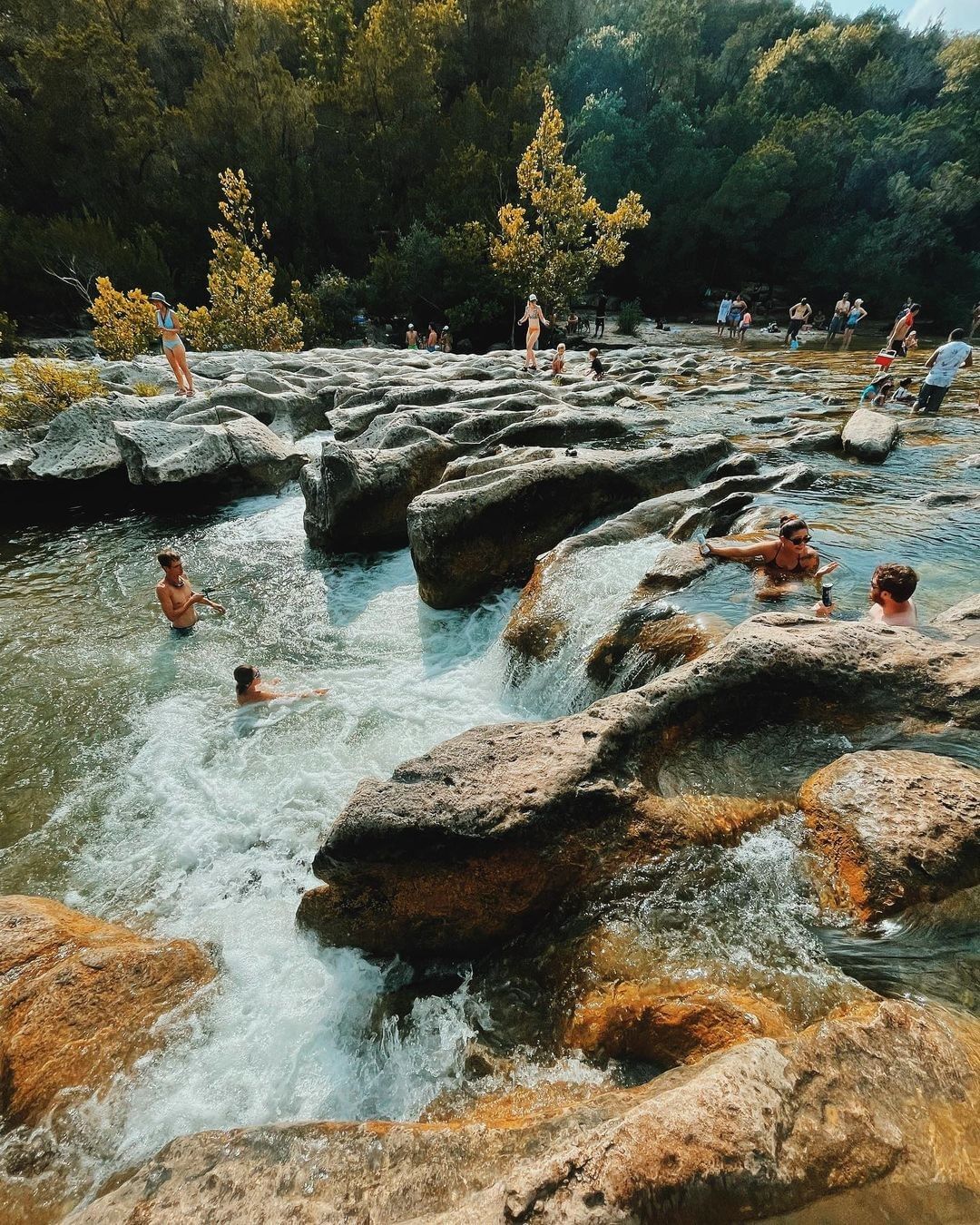
Image credit: wanderwheels_tx
- Fees: Free entry
- Hours of operation: Open daily, 5 a.m. – 10 p.m.
- Neighborhood: South Austin
- Official website: https://austinparks.org/barton-creek-wilderness-park
Looking to get lost within Austin city limits? Barton Creek is a prime pick. The Barton Creek Wilderness Park is the last section of the 7.25-mile Barton Creek Greenbelt, which begins in Zilker Park, stretching past limestone bluffs and hidden swimming pools until it hits the most untamed area at the end.
The Wilderness Park is the home of Sculpture Falls, one of the Greenbelt’s biggest attractions. Take the 4.2-mile loop trail for a challenge — sections require bouldering, which helps thin the crowds out.
Bull Creek District Park
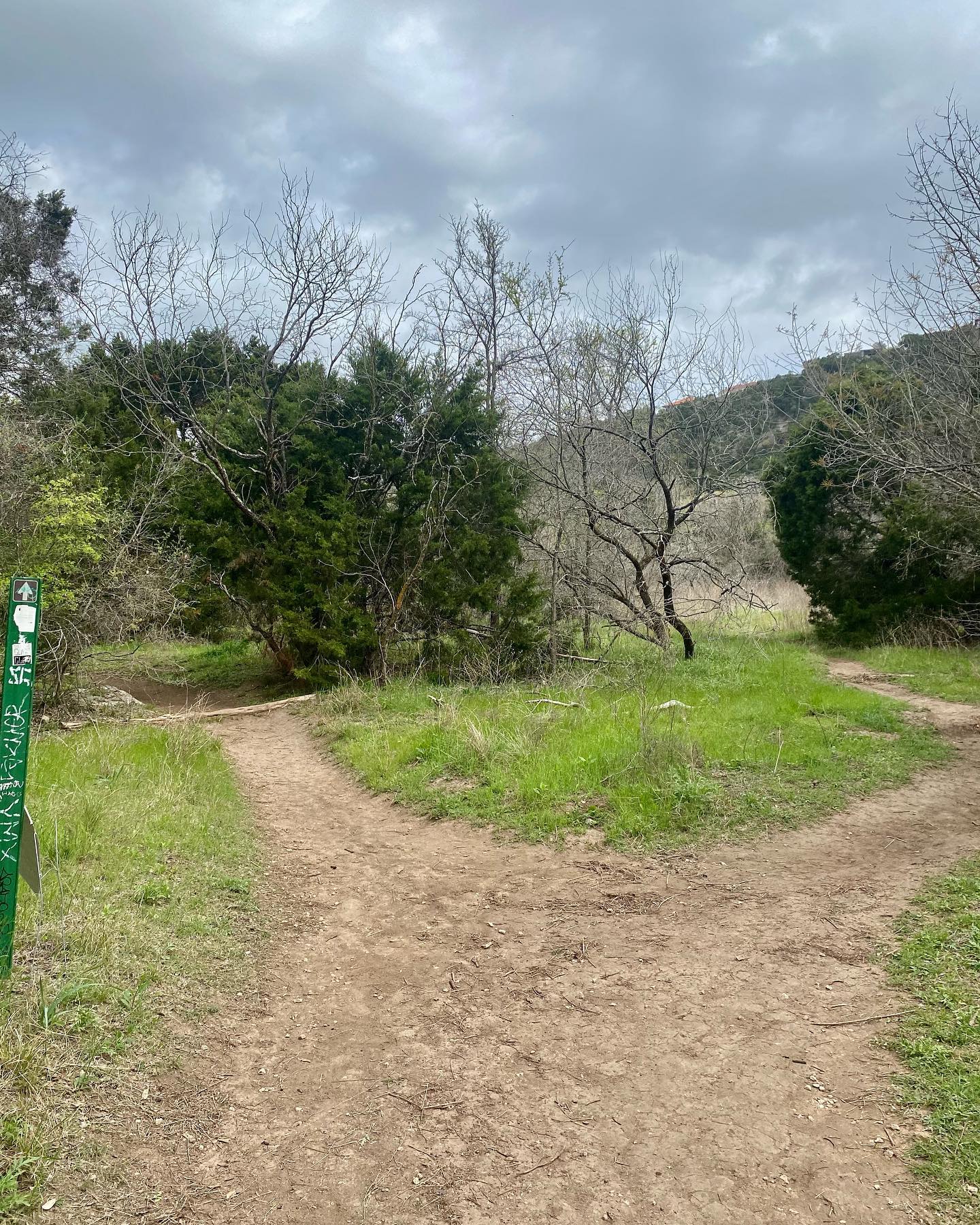
Image credit: mandi_guillen
- Fees: Free entry
- Hours of operation: Open daily, 5 a.m. – 10 p.m.
- Neighborhood: West Austin
- Official website: https://austinparks.org/bull-creek
Bull Creek District Park anchors the Bull Creek Greenbelt, which stretches through Hill Country woods and along the limestone outcroppings of the waterway. The Bull Creek Foundation calls Bull Creek the Galapagos of Texas — and they’re not exaggerating too badly.
There are hiking and biking trails, as well as dog-friendly access at frequent points along the creek. There’s a volleyball court and a picnic table area.
The park recently got better equipped for the high-use summer months: better ADA access, improved trails near the park entrance, and an information kiosk leading to the park’s historic structures.
Wild Basin Wilderness Preserve
- Fees: Free entry
- Hours of operation: Open daily, sunrise to sunset
- Neighborhood: West Austin
- Official website: https://parks.traviscountytx.gov/find-a-park/wild-basin
Wild Basin is 227 acres of native Texas Hill Country habitat. It’s jointly owned by Travis County (164.4 acres) and St. Edwards University (62.6 acres), and managed as part of the Balcones Canyonlands Preserve. St. Edward’s Wild Basin Creative Research Center is the fulcrum of most of the study and sustainability efforts that go on within.
Wild Basin has an interesting history, dating back to its 1974 conception by environmentalist Janet Poage. When development threatened this environmentally-significant piece of land — home to the endangered Black-Capped Vireo and Golden-Cheeked Warbler — she helped organize one of the first land swaps in Austin. The city gave the developer an adjacent property, and set a precedent for preservation amid the rapid development of the next decades.
Now, the preserve features 2.5 miles of hiking trails, with accommodations for school and youth groups as well as self-guided tours. Reservations are recommended on weekends.
Hamilton Pool
- Fees: Daily entry fee from $3–8 / Vehicle charge of $12
- Hours of operation: Open daily, 9 a.m. – 12.30 p.m. and 2 – 5.30 p.m.
- Location: Dripping Springs, TX
- Official website: https://parks.traviscountytx.gov/find-a-park/hamilton-pool
Also part of the Balcones Canyonlands Preserve, Hamilton Pool Preserve is 232 acres of semi-arid hills, canyon wetlands and Golden-Cheeked Warbler habitat surrounding the main attraction: a jade green pool, nested in the basin of a limestone grotto.
At the time of this writing, swimming isn’t allowed — the collapsed grotto that supports the 50-foot waterfall above the pool is collapsing further. Park officials are at work assessing the hazard, and the best way to safeguard the preserve for future generations.
Nonetheless, Hamilton Pool is worth the trip. If you’re a film buff, you might recognize scenes from the Dennis Hopper-directed film The Hot Spot, the 2010 sci-fi thriller Predators and the Terrence Malick film The Tree of Life. All feature the pool’s clear waters as backdrop.
Butler Metro Park
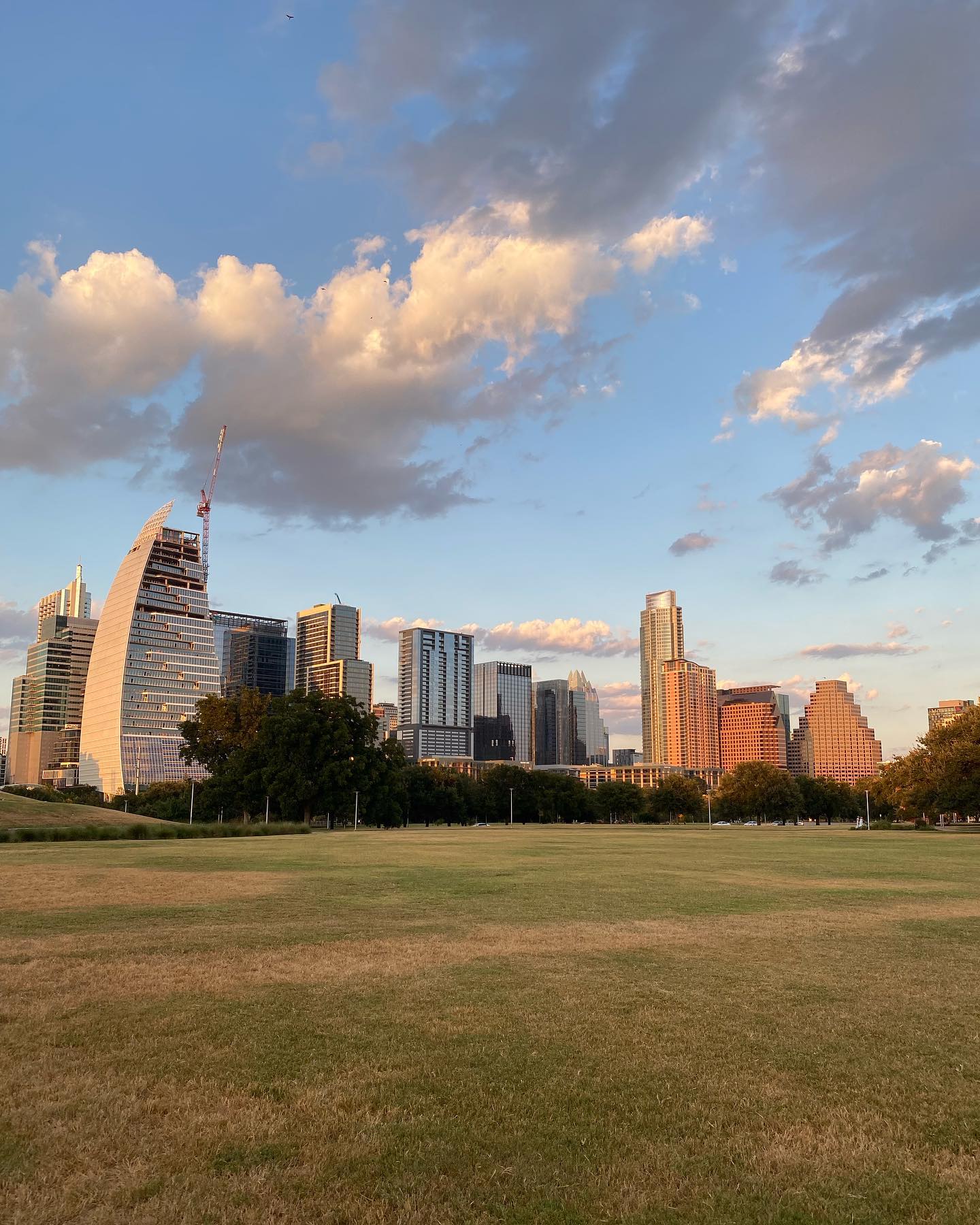
Image Credit: prettycity.austin
- Fees: Free entry
- Hours of operation: Open daily, 5 a.m. – 10 p.m.
- Neighborhood: South Austin
- Official website: https://austinparks.org/butler-park
Butler Metro Park is another of the beautiful green spaces ringing Lady Bird Lake. Its former name was Town Lake Metro Park — which should tell you something about its centrality to lakeside recreation.
With lawns fed through irrigation from the lake, it was one of Austin’s first ‘green parks.’ It sports more than natural beauty, with an observation hill overlooking Lady Bird Lake and the Austin skyline, the newly-completed Alliance Children’s Garden, the Dougherty Art Center, Butler Pitch & Putt, and the land that the Long Center and the Palmer Events Center sit on.
Onion Creek Metro Park
- Fees: Free entry
- Hours of operation: Open daily, 5 a.m. – 10 p.m.
- Neighborhood: South Austin
- Official website: https://austintexas.gov/department/onion-creek-metropolitan-park
Onion Creek Metro Park’s 555 acres have only recently been shaped by a Travis County master plan. In 2015, the transformation of 30 acres into irrigated playfields, a parking lot and trails was completed. 20 additional acres were cleared for accessibility and ecological restoration.
The Onion Creek Greenbelt runs north of the creek. But this park’s main attraction is a 3.6-mile loop trail through woods, water and swarms of butterflies. The trail is crisscrossed by less busy offshoots.
Dogs and horses allowed!
Red Bud Isle
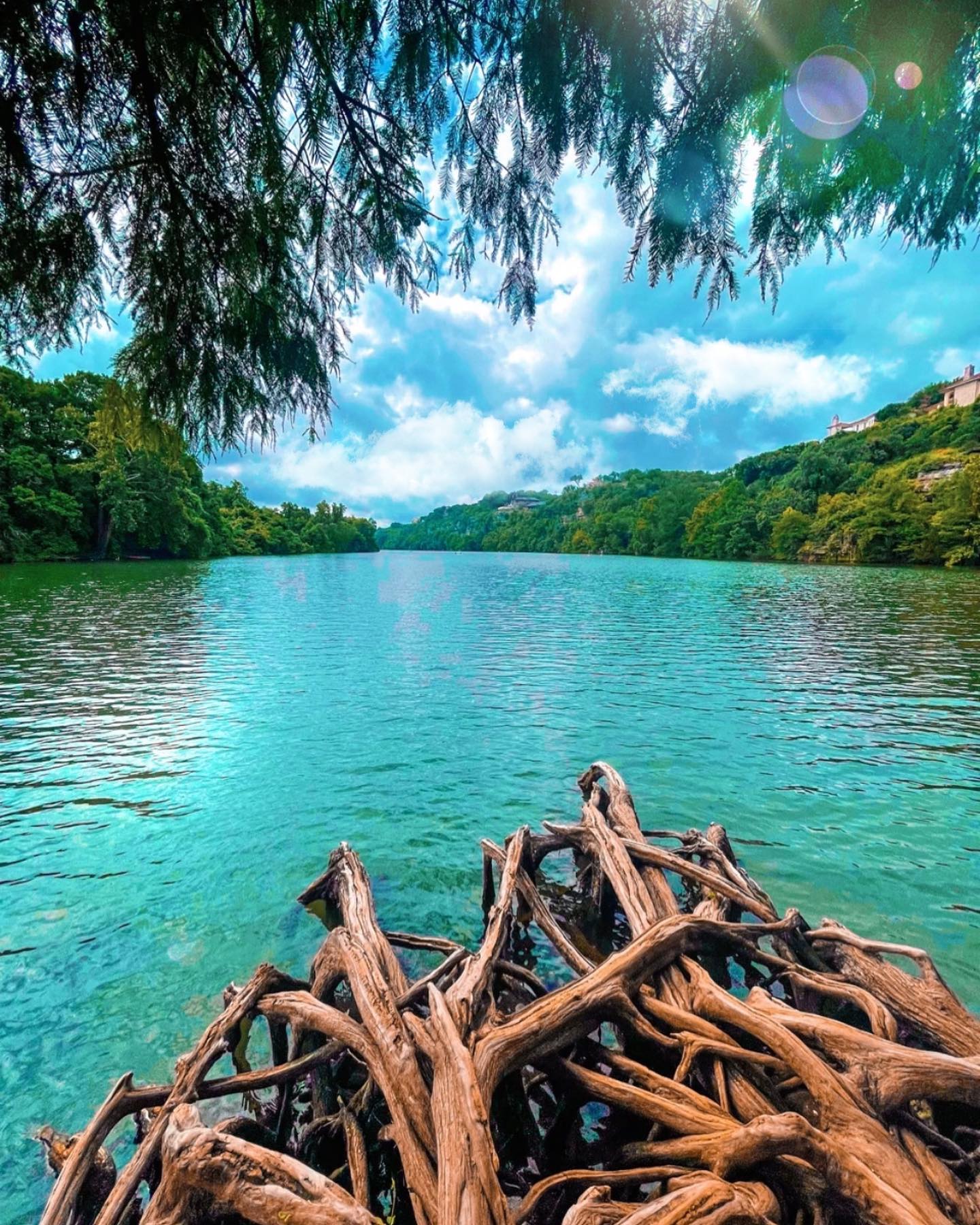
Image credit: cici_tucker
- Fees: Free entry
- Hours of operation: Open daily, sunrise to sunset
- Location: Inside Lady Bird Lake
- Official website: https://austinparks.org/red-bud-isle
This 17-acre island is only a few feet from mainland Austin, accessible by footbridge from the small parking lot and canoe and kayak from the boat launch.
The 0.5-mile loop trail features sparkling lake views and a unique vantage point for the mansions lining the nearby cliffs. The trail itself is more of a dog run, with off-leash dogs turning the trail muddy sporadically.
The nearby lakeside area is chock-full of restaurants. But the inland terrain quickly recedes into narrow and winding roads — it’s best to resist the urge to park up one of them if the parking lot is at capacity.
Walnut Creek Metropolitan Park
- Fees: Free entry
- Hours of operation: Open daily, 5 a.m. – 10 p.m.
- Neighborhood: North Austin
- Official website: https://austinparks.org/walnut-creek-metro-park
This 293-acre park features 15 acres of winding trails, an off-leash dog park, a swimming pool, a playground, five softball fields, two basketball courts and a volleyball court. It’s also well-equipped for a more relaxed time, with a reservations-required sheltered picnic area, 26 picnic tables and six barbecue pits.
It’s one of the most popular parks in Austin for dog owners and mountain bikers. The trails have a good amount of variety. They range from mile-long creekside rambles to an 8.8-mile loop trail. One will even lead you past the abandoned Coxville Zoo!
The park is hilly and wooded, with limestone bluffs surrounding Walnut Creek. It’s part of a larger network of parks and trails around the Walnut Creek watershed.
Shoal Creek Hike and Bike Trail
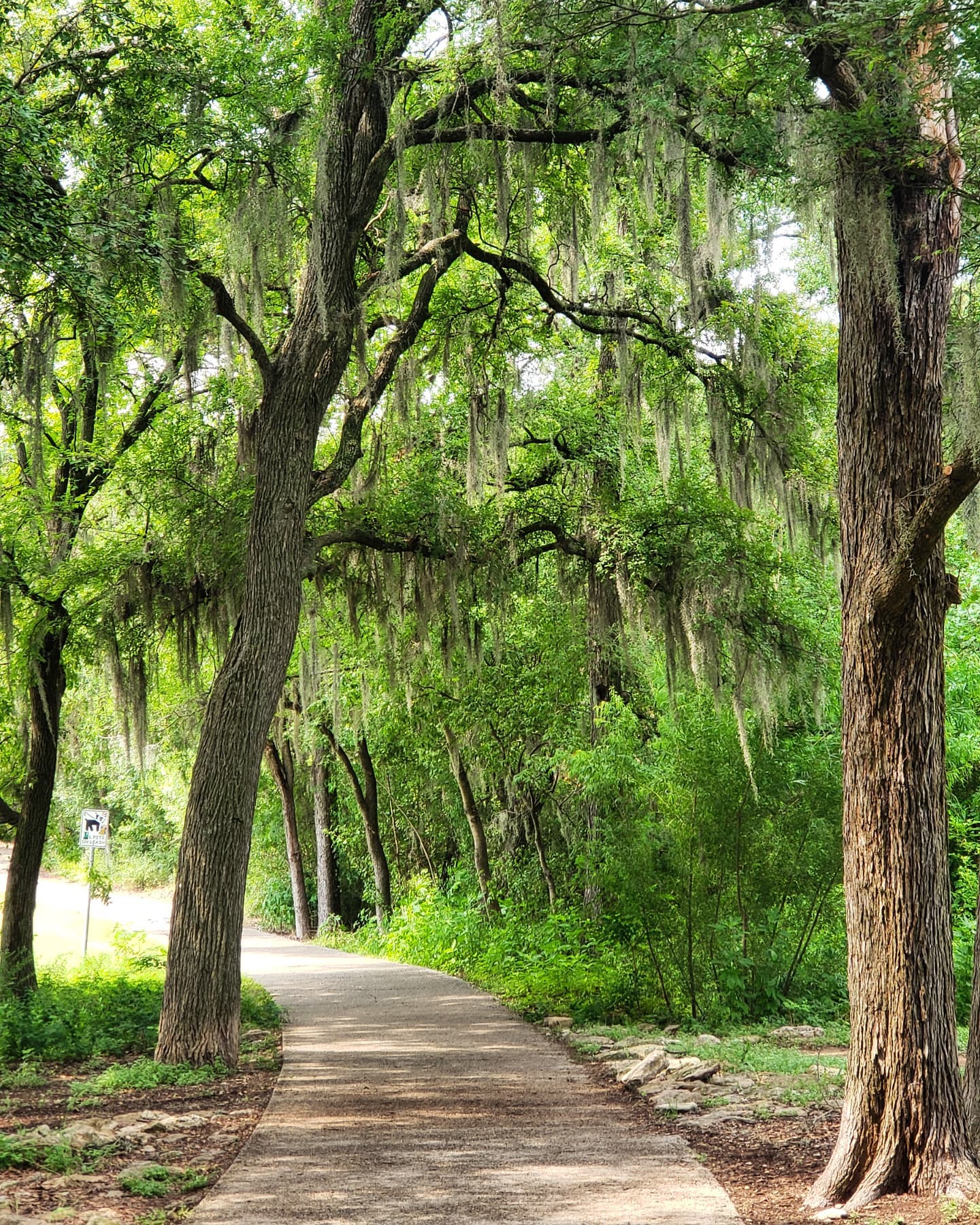
Image credit: kmbbohrer
- Fees: Free entry
- Hours of operation: Open daily, 7 a.m. – 10 p.m.
- Neighborhood: Downtown Austin
- Official website: https://shoalcreekconservancy.org
The Shoal Creek Trail has the distinction of being Austin’s oldest hike-and-bike trail. This 1960s trail has a north endpoint at 38th Street and stretches 3.7 miles south to Lady Bird Lake, passing through Pease Park and Duncan Park along the way. From there, cyclists can extend their journey along the Lance Armstrong Bikeway.
To the north of the trail is a small canyon, close to Bailey Park. This is a trip highlight.
The terrain shifts from packed dirt to crushed gravel to concrete, much of it under a canopy of old oak trees.
Brushy Creek Regional Trail
- Fees: Free entry
- Hours of operation: Open 24 hours
- Location: Cedar Park, TX
- Official website: https://www.wilco.org/Departments/Parks/County-Parks-Trails/Brushy-Creek-Regional-Trail
We’ve saved one of the best trails for last. Brushy Creek’s two sections come to nearly 10 miles, and they are some of the most varied on the list.
This is Round Rock’s answer to Austin’s hike-and-bike options, with more spur paths and attractions built by the year. The grand plan is to create a connected trail system that will extend from one end of Round Rock to the other — and eventually to the boundaries of Williamson County.
As it stands, the trail features signposted historic sections, a paleolithic-themed archaeological park called Champion Park, and passage under an 1880s railroad trestle. Along the way it connects a half-dozen parks, with opportunities for swimming, rock climbing, fishing, canoeing and kayaking.
Bastrop State Park
- Fees: Daily entry fee is $5 / Camping prices range from $15–25
- Hours of operation: Open daily, 6 a.m. – 10 p.m.
- Location: Bastrop, TX
- Official website: https://tpwd.texas.gov/state-parks/bastrop
This 6,600-acre National Historic Landmark is notable for more than one reason. First, there are the loblolly pines. These thin stands of evergreen have been genetically isolated from other pine forests in the state, earning them the nickname, ‘The Lost Pines of Texas.’
Next is the run of bad luck the park has endured, dating back to 2011. That was the year that 96% of the park burned in the Bastrop County Complex fire. The next year, a campaign was undertaken to replace the four million trees lost to the fire. In 2015, the dam on its 10-acre lake broke, destroying the lake and causing millions in damage.
The park is also unique for its Civilian Conservation Corps infrastructure, a model of the style that served as a template for later park development. But none of this would matter if it weren’t a place that people wanted to visit. The park offers all of the classic activities, including permit-free fishing in Lake Mina.
Go Enjoy the Best Parks in Austin
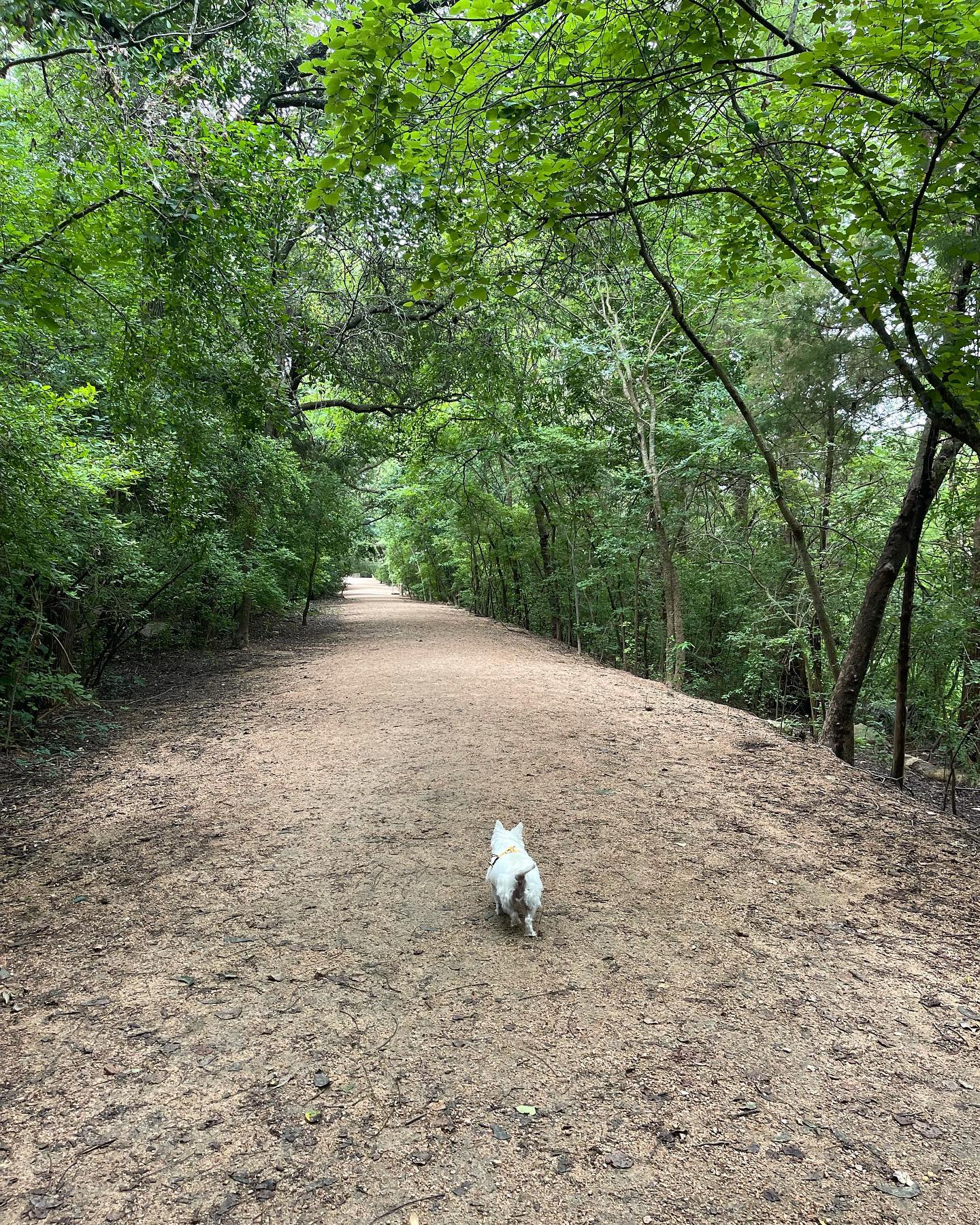
Red Bud Isle Park (Image Source: cici_tucker)
Austin’s outdoor spots have long been a main draw for the city.
They struggled through the early months of the pandemic, but now most are back at capacity.
That makes this an ideal time to get out there and take advantage of all the best parks in Austin have to offer!
